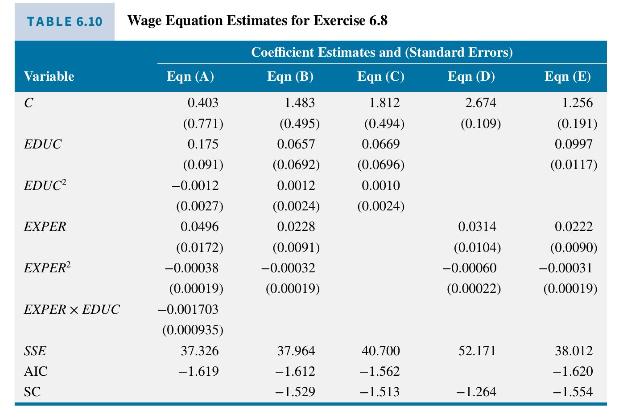Consider the wage equation where the explanatory variables are years of education ((E D U C)) and
Question:
Consider the wage equation
![]()
where the explanatory variables are years of education \((E D U C)\) and years of experience (EXPER). Estimation results for this equation, and for modified versions of it obtained by dropping some of the variables, are displayed in Table 6.10. These results are from 200 observations in the file cps5_small.
a. What restriction on the coefficients of Eqn (A) gives Eqn (B)? Use an \(F\)-test to test this restriction. Show how the same result can be obtained using a \(t\)-test.
b. What restrictions on the coefficients of Eqn (A) give Eqn (C)? Use an \(F\)-test to test these restrictions. What question would you be trying to answer by performing this test?
c. What restrictions on the coefficients of Eqn (B) give Eqn (D)? Use an \(F\)-test to test these restrictions. What question would you be trying to answer by performing this test?
d. What restrictions on the coefficients of Eqn (A) give Eqn (E)? Use an \(F\)-test to test these restrictions. What question would you be trying to answer by performing this test?
e. Based on your answers to parts (a)-(d), which model would you prefer? Why?
f. Compute the missing AIC value for Eqn (D) and the missing SC value for Eqn (A). Which model is favored by the AIC? Which model is favored by the SC?

Step by Step Answer:

Principles Of Econometrics
ISBN: 9781118452271
5th Edition
Authors: R Carter Hill, William E Griffiths, Guay C Lim





